Submitted by Berrin Chatzi Chousein
Special Review: TrendTopics At MIPIM 2016
France Architecture News - Mar 29, 2016 - 10:40 11989 views

by Berrin Chatzi Chousein, editor-in-chief, WA
The most prestigious real estate event of the year, MIPIM 2016 has been held in Cannes, France between 15 March -18 March 2016. In total, there were 23.500 participants from 89 countries at the real estate event and 2.450 exhibiting companies have presented their new projects, models and new investment networks for the new countries. The world’s real estate decisions makers were composed of 1.500 architects & designers, 3.500 developers and 550 cites & local authorities according to MIPIM’s reports. In addition, +1000 projects have been presented in the healthcare, residential, mixed use, retail & leisure, sport and industrial & logistics categories. MIPIM 2016 hosted approximately 100 conferences and 150 networking events during the 3-days real estate fair.
The most competitive titles have been discussed on a global scale by different investors, architects, authorities and the CEOs of the most important companies. The major topics of MIPIM 2016 contained new startup competition, affordable housing, student housing, digital technology in real estate, urban policies and new generation of residential developments.
The other most important part of MIPIM 2016, as it has been organized in every year, has focuse on ‘innovation’ through architecture and design at Innovation Forum Hall 1-2, which hosted many renowned architects and architecture firms from around the world. Prof. Ben Van Berkel, UNStudio, Tobias Nolte and Andrew Will, Certain Measures, Melkan Gursel Tabanlioglu, Tabanlıoglu Architects and Christian Gaertner, Urban Standards were the special guests of Innovation Forum.
Ben Van Berkel’s presentation has focused on ‘Tomorrow’s Buildings: high, clean, smart, mixed? (innovation, architecture, mixed-use, vs. pure residential, impact of climate change). Tobias Nolte’s topic covered ‘Spatial recognition: data mining the city’, Melkan G. Tabanlioglu’s presentation was mainly about ‘Cities of Past & Future’ and lastly, Christian Gaertner has presented ‘Mobility revolution and the Real Estate Industry-Turning low revenue parking into high return assets’.
MIPIM’s tradition at Innovation Forum continues every year with private talks in the 1500 m2 pavilion. The area gathers all innovation stakeholders to showcase the most innovative solutions and practices to increase the values of property assets. Topics tackled in the innovation forum are industrial solutions, architecture, smart cities, smart building solutions / technology, certification / sustainability, utilities / energy, software & digital applications.
When we evaluate record-breaking attendants for MIPIM 2016, it has been reported that Turkish delegations hit Cannes this year. One of the Turkish highlights is the Istanbul Chamber of Commerce, which has a 300 sqm pavilion on the sea front where the city of Istanbul and 15 municipalities are represented. Inside is a 96 sqm model of İstanbul, according to MIPIM daily news.
A total of 250 companies and municipalities from Turkey took part this year with cities represented including Antalya, Balikesir, Bursa, Hatay, Istanbul, Kocaeli, Konya and Ordu, mentioned in the same source.
Among the companies participating with their own stands this year are: Beyoglu Investors Group, Efekta Architects, Esas Properties, Lal Real Estate Appraisal, Ozak-Yenigun-Ziylan Partnership, Oncuoglu+ACP Architects, Ozer-Tulgan Architects, ProPlan, Sabri Pasayigit Design Office (SPDO), Tabanlioglu Architects, Tahincioglu and TSKB Real Estate Appraisal Company.
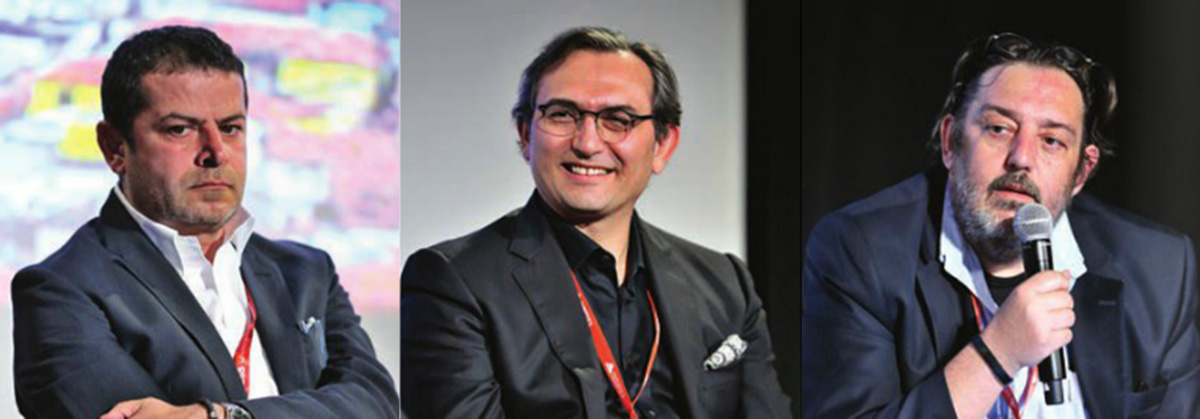
Moderator: Cuneyt Ozdemir, Oncuoglu+ACP's Enis Oncuoglu, METU's Professor Dr. Abdi Guzer. image courtesy of MIPIM.
Moreover, in the conference programme of the sessions has focused on Turkey. ‘Architectural View on Turkish Megaprojects’ held March 15 at Ruby Room. The session took an analytical design approach to some of huge national projects currently being constructed in Turkey with completion aimed for 2023, the centenary of the creation of the Turkish Republic.
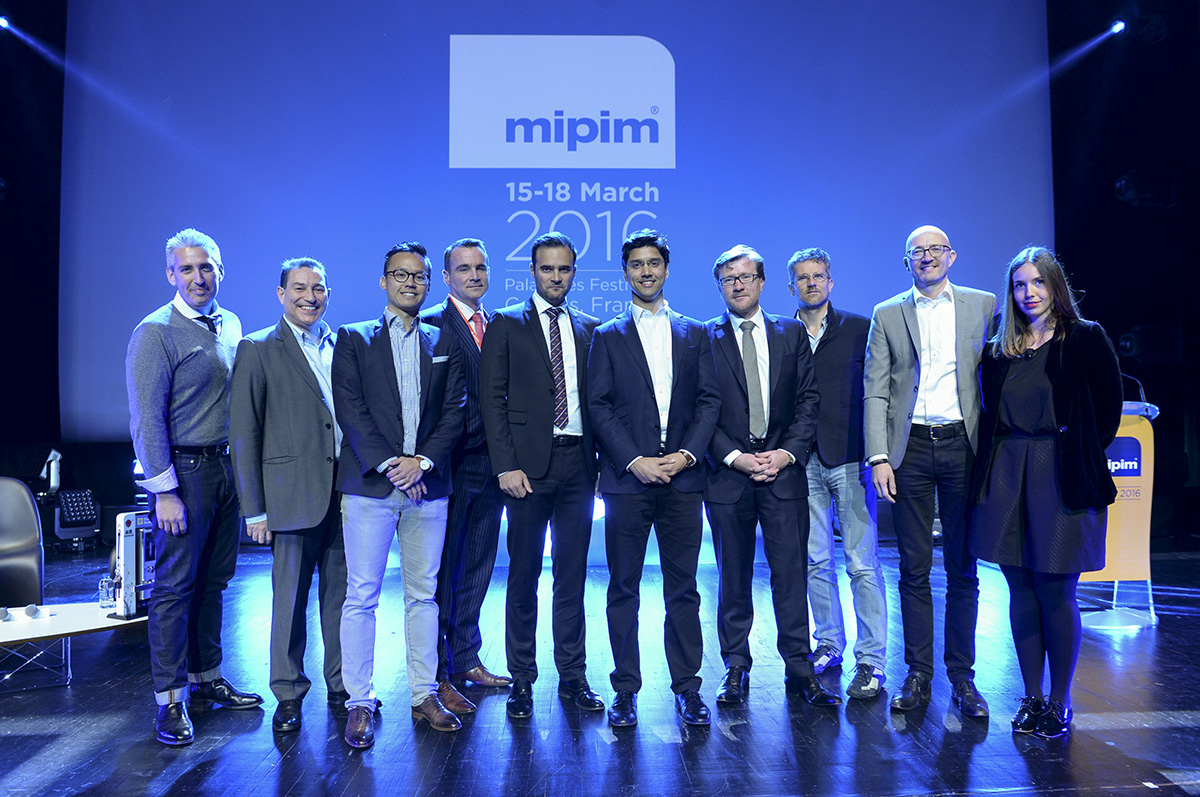
MIPIM 2016, Conferences, Startup Competition, image © S.d'Halloy / Image & Co. 'Urbismart' is the winner of Startup Competition at MIPIM 2016.
New formats: Startup Competition at MIPIM 2016
The inaugural MIPIM Startup Competition will provide a ‘‘vision of the future’’ and ‘perhaps speed it up’’, according to Laurent Pavillon, global head of business marketing and communications at sponsor BNP Paribas Real Estate.
The overall winner of a competition that began last year and had its third and final selection round in Cannes, announced during the Awards Ceremony on Thursday evening. The competition has been instigated to reflect the importance of technology in the development of residential and commercial property.
The first ever-global real estate & urban management startup competition (competition 3rd round) took part in Cannes. Stopping by London, Hong Kong and Cannes, the Startup Competition has shined a spotlight on the most dynamic and promising international startups and real estate & urban management solutions.

MIPIM 2016, Conferences, Startup Competition, image © S.d'Halloy / Image & Co.
Six pre-selected startups have presented their projects with different themes in the first day of MIPIM 2016 containing Jooxter (France) –‘‘Joining People & Workplaces’’, Simplyture (Denmark)- ‘‘ Simplifying / enhancing parking and its administration through plate recognition and Al’’, Locatee (Switzerland)- ‘‘Creating a better workplace with big data technology’’, Opinum (Belgium)- ‘‘Give Sense to Your Consumptions!’’, Hamwells (The Netherlands)- ‘‘Hamwells builds e-Showers that save %90 on water & energy’’, Urbismart (France)- ‘‘Transforming Transportation, a metaplatform for smart and green logistics’’.
The winner of Startup Competition has been announced as Urbismart (France)- ‘‘Transforming Transportation, a metaplatform for smart and green logistics’’ during the Awards Ceremony held on Thursday, March 17.
‘‘We became involved because, as a company that views maintaining leadership as crucial, we see technological innovation as key to the challenges the real estate industry is facing’’ Pavillon said. ‘‘MIPIM is a leader in the industry and it is the perfect platform to encourage and recognize such solutions. It’s a real plus point for the Awards.’’
Urbismart’s business model aims to reduce logistic costs set up in different distance channels. Urbismart’s digital model reveals multi-platforms presented by multi-models and supports emission-free vehicles. The digital platform sends only one touch to rare streets. In his pitch Urbismart CEO Jean-Paul Rival promised big change for the logistics market that could offer a complete revolution to the supply chain by better organizing both home and business deliveries.
‘‘By changing the way we enter the city we can change the shape of the city for tomorrow,’’ he said. He also pitched for funding for his ‘one truck in one street’ business. ‘‘We have the software and we have the team, we just need the gas to run the engine’’ Rival said. Some %71 of the audience voted it as their favourite startup crowning Urbismart a winner in the eyes of the audience at least, according to MIPIM daily news.
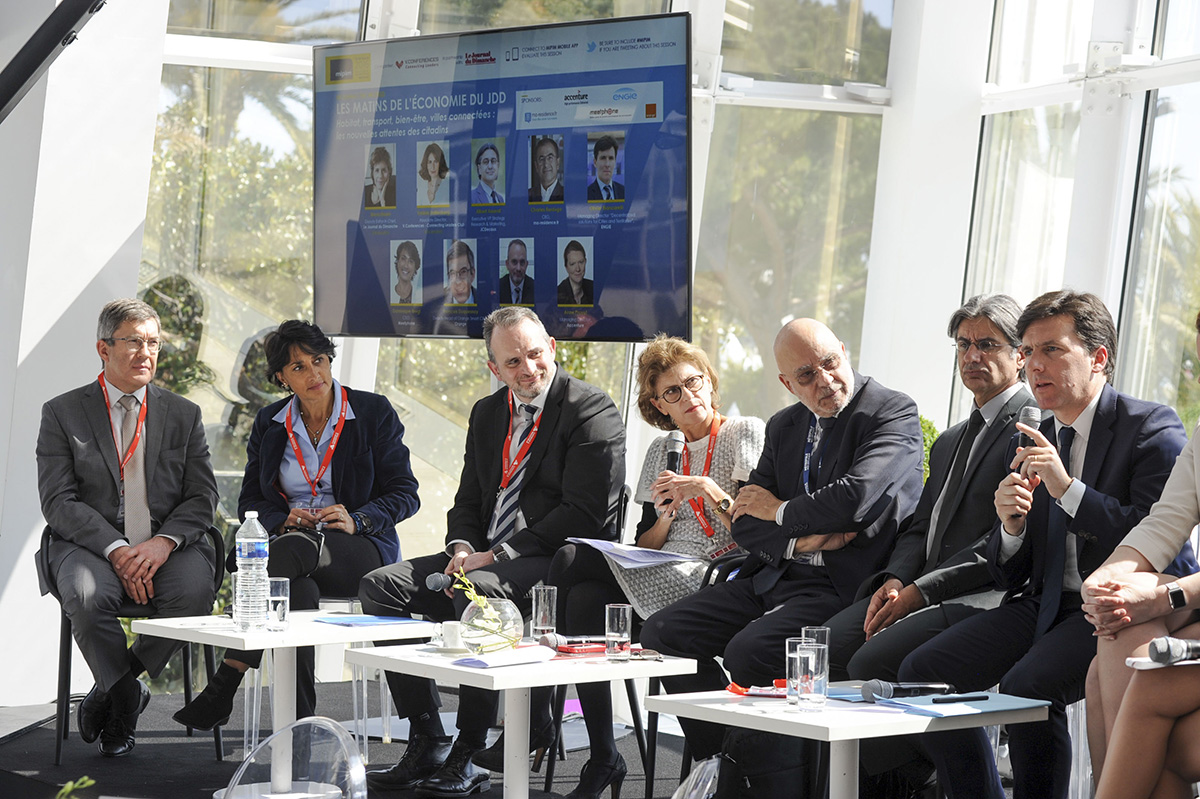
MIPIM 2016, Conferences, Les MAatins De L'economie Du JDD - The New Expectations Of The Urban Dwellers In The Smart Cities. © J. Gorin / Image & Co.
Affordable Housing and Social Housing
‘Affordable Housing’ was an important part of MIPIM topics to draw a general framework on low-cost residential developments, which has been discussed widely by several investors. Residential strategies have showed that population growth and residential demand are the key drivers for deciding where best to invest in the residential market, especially in social housing or affordable housing, different panel of experts put forward at many conferences of MIPIM 2016.
Germany, the Netherlands and the UK were all identified as attractive European investment locations, according to LaSalle head of European research and strategy, Mahdi Mokrane.
‘‘The yield environment has been typically low for the residential sector but at the moment it looks reasonably attractive,’’ he said. ‘‘In Germany there are perhaps 10 to 12 cities which we believe will really benefit from growth, even though nationally the population is in decline. We like the Netherlands for different reasons and we also like UK cities like London, but also Manchester, Birmingham, and we recently made an acquisition in Leeds’’.
Silvio Estienne, general manager at Patrizia, said the residential market in France is stable but expressed concern about ‘‘squeezed middle class’’, who neither has access to affordable housing nor enough money to purchase their own property.
Meanwhile, New York-based Kinsey Capital president James Kinsey said that the Manhattan market continued to be supported by constrained supply and the lack of ‘‘normally priced’’ residences because the only economically justifiable development luxury condos’’, which has been discussed in the panel of ‘‘Residential Investment Portfolio: The Best is Yet To Come’’.
The panel moderated by Liam Bailey, Global Head Of Research, Knight Frank and the speakers were; Silvio Estienne, General Manager, PATRIZIA, James D. Kinsey, MRICS, CCIM, President, Kinsey Capital LLC, Mahdi Mokrane, Head of European Research and Strategy, LaSalle and Bruce Ritchie, Founder and CEO, Residential Land.
The issue of Affordable Housing has also been discussed in the session of ‘‘Metropolitan Cities: Are Housing Needs and Demands Aligned?’’, moderated by Ariella Masboungi, architect and urban planner, supervisor general sustainable development, Ministry of ecology, sustainable development and energy. In this session, the experts have discussed social housing needs and its urban policies as general demand considering Bologna and Manchester urban regeneration projects. ‘‘There are 20.000 social housing units in Bologna, are occupied by 50.000 tenants, not all of them Italian, demonstrating that the city is attracting residents from outside the local area’’ said Chiara Caselgrande, Vice President of Bologna’s municipal council.
‘‘However, designing social or affordable housing should be tackled from many perspectives, various approaches should be integrated into design process; amenities, infrastructure, bicycle roads, pedestrians, existing fabric, penetration of classes because affordable or social housing needs should not make a social discrimination among communities. We want everyone to feel like they belong there. Cities are shaped different in suburbs and we have to provide more fluid movement and more integration, decreasing the costs of housing units is not the only solution’’ Caselgrande added.
Manchester is another important city that uses public funds only to create social housing (nothing else). According to Ian Boylan, of Manchester City Council, Manchester develops new public policy allocating social housing to balance powerty. Boylan has emphasized that ‘‘past city planners and poor city management damaged city for years. He said that they’ve…moved forward and changed the nature of the housing offer, but still have a long journey ehead…’’
Manchester aimed to repurpose existing historic structures, factories and mills. The city has also rehabilitated thousands of dysfunctional social housing units and made significant investments in infrastructure. Boylan has also added that Manchester is a university town, and because of this, demographics change every five years. It is important to revive the city to appeal to the general public while still maintaining affordability for students, middle class and elderly. Even with these improvements and attention to affordability, ‘‘affordable housing’’ is only %20 less expensive than market rate.
Manchester has started to redensify / regenerate the city allowing to 4000 homes and the city of Manchester reversed the treadmill of 1990’s regeneration. ‘‘Now, 24.000 residents live in the heart of the city’’. ‘‘If you want to create self-sustaining communities, you have to decide various things like changing the economic character of place’’ Ian Boylan added. ‘‘There is very limited money for social housing’’. ‘‘Now, %45 of social housing is taking place in Manchester’’ added experts in the session.

MIPIM 2016, exhibition Area - inside. image © V. Desjardins / image & Co.
Student Housing or Affordable Student Housing Units
Student housing is a new investment focus for young generation and for their future in the real estate market. There is strong and growing demand in many countries including, China, US, and much of Europe because of the increase in international students. Particularly, foreign students want ready units equipped with furniture, telephone, internet, etc. Specifically, shared kitchens and workrooms are highly desirable for students. Designing micro-sized units (appr. covered 50m2 area) keeps prices down for those students on a tighter budget.
‘‘Student Housing: A Niche With Growth Potential’’ special session has focused on current student investments starting from US, Germany, Asia to France and Australia. The panel moderated by Alexandra Notay, Independent Strategy, Advisor, Alex Notay Ltd. The speakers were Nathan Goddard, Vice President, Real Estate, Student.com, James Lee, Senior Principal, Kensington Realty Advisors, Horst Lieder, CEO, International Campus AG, and Victor Lor, Head of Asia Pacific, GSA Investment Management.
Until recently student housing operated in something of bubble as a stable and relatively straightforward asset class. However, the increasingly sophisticated student customer now expects an accommodation ‘experience’ that includes amazing facilities and service as standard. The operational similarities with multifamily / private rented sector (PRS) and those increased customer expectations have seen the globalized student sector become s ‘gateway’ to wider residential investment. Many established student operators are also exploring the opportunities in the new asset class emerging around Build to Rent /PRS.
In this session, Nathan Goddard has emphasized that ‘‘Purpose built’’ housing makes up between 3%-7% of the current student-housing inventory in these countries. Goddard also added that the goal is to continue to grow the global demand market and move into new supply.
Horst Lieber, CEO, International Campus AG, commented that flexibility of unit mix is a key factor and trend in student housing. The new model for this market is shifting away from the typical shared accommodations.
‘‘Education is the number 1 non-commodity contributing sector to GDP. Student housing is growing in Australia and will continue to evolve for the next 7-10 years. Japan and China are still untapped markets with vast potential. Micro trends in international politics are not expected to disrupt the growth of this growing niche market.’’ Said Victor Lor of GSA Investment Management representing Asian market.
James Lee of Kensington Realty Advisors said that student housing in the US is truly its own asset class. With university acceptance rates rising from 47% to almost 75% in recent years, the outlook for this market is bright. Lee commented that demand for amenities is getting out of control, however, the number 1 requirement for students in housing facilities is reliable high-speed internet, while parents want value, but, will pay more to ensure their children are safe. Pure and simple for investors, is that they desire and require cash-flow. Although the student housing market is growing, the yield is only 25 basis points above multi-family. However, if amenities are provided to satisfy both students and parents, cash-flow will continue to perform and attract investors.
To sum up, according to all panelists the common is that e-learning puts a risk to the growth of student housing but in this case, international students are great potential at the core of this market since they continue to increase and require new demands with very low-budgets. All panelists agree that students need bigger spaces with low prices-a fixed student apartment and approx. 50m2 area offers more affordable accommodation for students because they look like their own home. This is a new brand strategy to understand the demands of young groups. Particularly, this is a very ‘powerful model’ for Asian market.
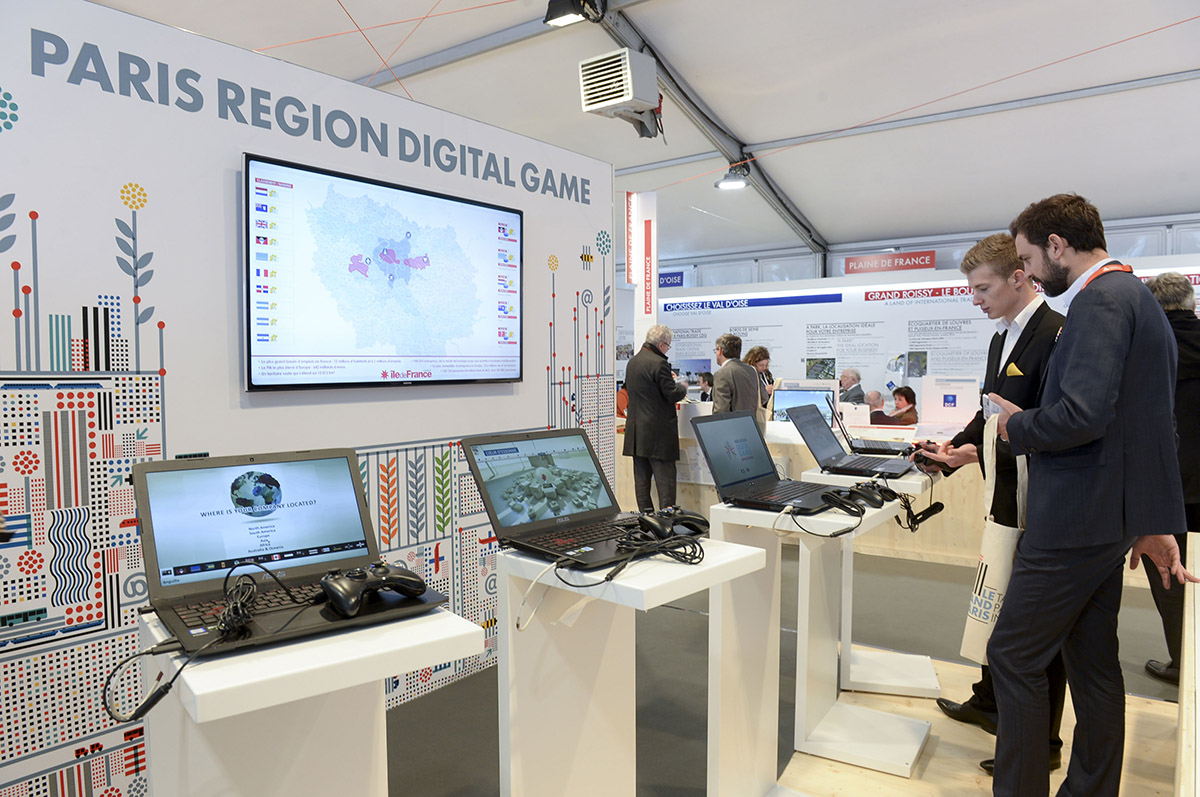
MIPIM 2016, exhibition area, Croisette Village, PAaris Region, © S.d'Halloy / image & Co.
Digital Technology in Real Estate / How digital technology shapes real estate market?
The boom in property technology called ‘proptech’ in Europe and ‘REtech’ in the US, which is a new term for the property market. Digital transformation is unavoidable for every company to move forward, get fastier solutions and to get services on demand networks. The phenomenon of ‘proptech’ has been discussed widely at MPIM for both Europe and US companies. Now, it is a fact that how new technological approaches are shaping real estate industry? The notion of ‘proptech’ requestions the demands of companies and workers on clean technologies and products in order to increase productive environment.
The special session co-organized by RICS held at MIPIM on Thursday, March 17 and the phenomenon of ‘proptech’ has been evaluated from the investor’s view. Titled ‘Proptech Latest Trends: The Investor’s View’, the panel moderated by Amanda Clark, FRICS, President-Elect, RICS. The speakers were Daniel Cook, Director of Strategy, Lead RICS Futures, RICS, Aaron Block, Co-founder and MD, MetaProp NYC, Fulvia Rafaelli, Acting Head of Unit, Clean Technologies and Products, DG Grow, Nick Romito, Founder & CEO, VTS, Taylor Wescoatt, Expert in Residence, Seedcamp.

Panel: Proptech Latest Trends: The Investor's Views. image © WAC
New technology is revolutionising the real estate sector, from the emergence of a new sharing economy to automated mass transport systems, the built environment landscape is changing rapidly. New innovations are changing the way we understand, use and interact with property.
Around $1.5bn a year has been invested into new start-ups in our sector for the past two years, the bulk into the US market. What are investors in this space looking for? What are the most sought after technologies that will redefine the property sector?

investment in PropTech. image courtesy of Global Real Estate Experts
In the session, Aaron Block, Co-founder and MD, MetaProp NYC, said that ‘‘as you can see from the picture, just a drop in the bucket for now; it’s way smaller than fintech right now, for example. So in other words, it’s very early days. But it’s growing fast. MetaProp has invested in 60 real estate startups in the past three years, but will invest in another 25 this year alone.’’
Fulvia Raffaelli, Acting Head of Unit, Clean Technologies and Products, DG Grow, commented that ‘‘digital transformation is happening. I’ve been amazed by the amount of innovation at MIPIM. So what can the EC’s role in this trend be? We need to have a strategy and initiatives for startups, creating conditions for companies to grow in Europe; removing existing obstacles to allow momentum to happen. We support innovation’’
It was a general question that the panel were asked how they saw the sector in 15-20 years and will proptech monopolies crop up? Taylor Wescoatt, Expert in Residence, Seedcamp, answered that ‘‘not necessarily and he dded that ‘‘monopolies get broken quickly in tech. Look at tablets vs PCs! And real estate companies will become tech companies who happen to work in RE.’’
Undoubtedly, digital innovation and new products impact the way we work, we think and we design for every environment in that new technologies suggest fastier, easier and better solutions to increase collaboration, cooperation and multi-platformed management operations. The other challenging medium is ‘crowdfunding’ platforms that trigger the way we promote the product to the public and many crowdfunding digital platforms use public money with more transparent way, get swift money transaction and witness the decision of public on a specific project.

Coworking 2.0. image courtesy of Global Real Estate Experts
Digital innovation in real estate also transforms retail and office spaces, as it has been discussed in many conferences at MIPIM. High Return on Creative Investment: Coworking 2.0 session has focused on new workspaces offered by proptech companies. Creative professionals in urban areas are already demanding a new type of workplace. Coworking 2.0 is a specifically designed space for collaboration between professionals who work in small and medium creative enterprises and a hybrid between business centre and a coworking space.
The moderater of the session was Edgars Ivanovs, Developer, Riga Powerhouse. The speakers were Karlis Gedrovics, Managing Partner, Inspired, Yan Yarmoshuk, Chief Executive Officer, FlaconX.
Karlis Gedrovics, Managing Partner, Inspired, stated that ‘‘we want to grow, but we have a problem: how do we manage that? We need a vibrant ecosystem where there’s networking going on but where you can work quietly if you need to too.’’
‘‘Started offering coworking to freelances and designers who wanted to work in our atmosphere. We have office to rent and retails spaces; we have a TV and radio channel. Coworking spaces are an easy way to start business together. There are now over 70 coworking spaces in Russia’’ said Yan Yarmoshuk, Chief Executive Officer, FlaconX.
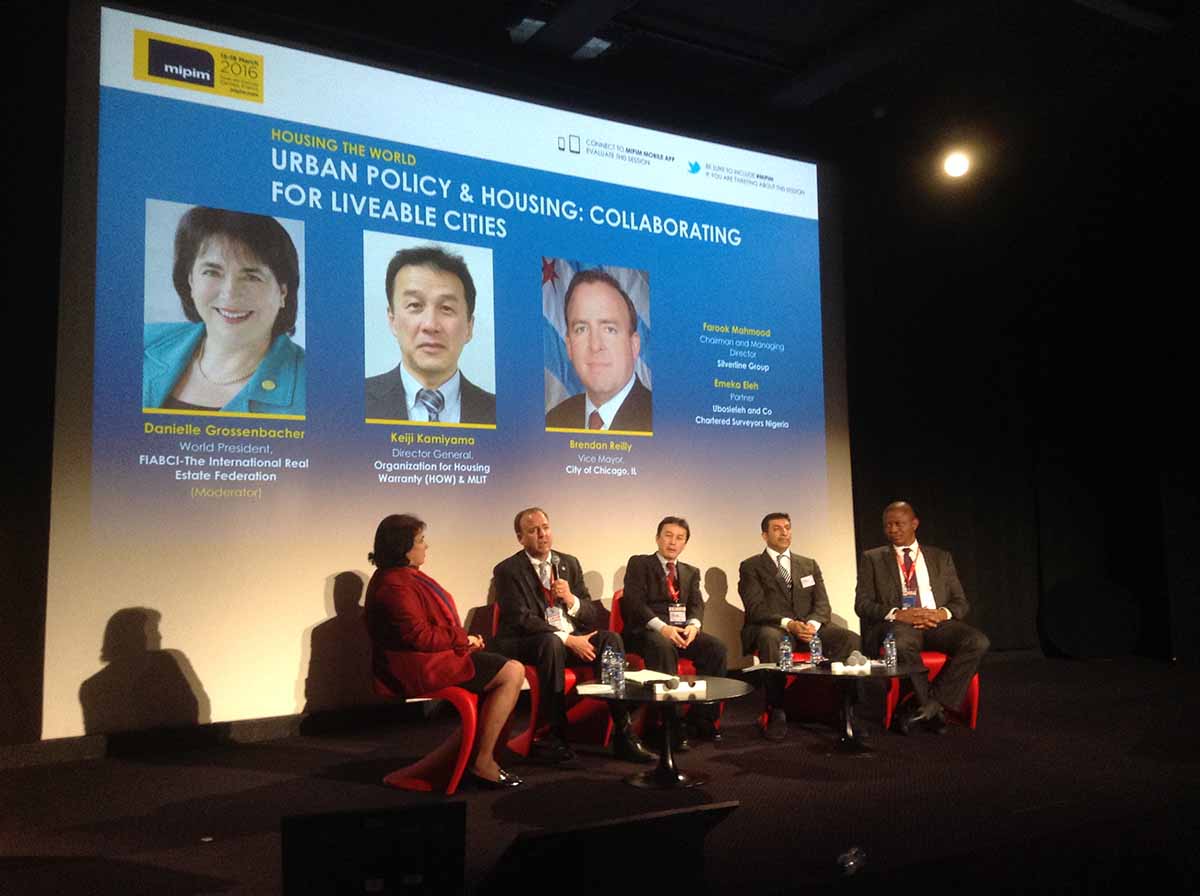
Panel: Urban Policy & Housing: Collaborating For Liveable Cities. image © WAC
Urban Policies in Cities
Urban policies and housing are the core issue of cities in terms of transportation, service systems, public spaces, basic needs, green environment and infrastructure. However, to get a better environment, all cities need different needs and design approaches with different urban policies.
How are most affordable housing developments currently financed? Are there any alternative funding sources? What are the innovative policy solutions to handle the critical housing issues? How can we make affordable housing a reality and build enough units each year to respond to the huge demand for such housing? Is there a new model? How to integrate sustainable transportation to create opportunities for housing? are the basic questions that need to be answered.
Creating dense, mixed-use and convient cities are not enough to make it liveable, vivid and dynamic. Good public transport, safety, organic network, open spaces and sustainability are the major concerns about the future of the cities. According to several discussions held at MIPIM, it has been claimed that Helsinki promotes safety of the city compared to Florida, California or Kyoto. Especially, Europe people want to feel safe and new developments in many cities of Europe present open porous corridors in design. Paris is the key city to get safety conditions after Paris attacks.
All experts agree that various parameters need to be considered to create a livable environment and the basics are; safe, healthy and efficient environment at first. ‘‘in order to provide efficient transport we must have density and in order to minimize excess travel time we must have mixed use where we can work, shop, live and play nearby. More density requires that we merge and share open spaces and good land use planning will provide great gathering spaces.
‘‘Urban Policy & Housing: Collaborating For Liveable Cities’’ session held on Thursday, March 17, Ruby Room, moderated by Danielle Grossenbacher, World President, FIABCI-The International Real Estate Federation. The speakers were Keiji Kamiyama, Director General, Organization For Housing Warranty (HOW) & MLIT, Brendan Reilly, Vice Mayor, City of Chicago, IL.
This session has evaluated the recent urban conditions and infrastructural problems of US or Europe as well as India, Mumbai, Lagos and Nigeria. The experts stated that ‘‘we have to sensitive about other communities as well and need a lot of collaborations while developing urban policies. Affordable housing deserves more comprehensive approaches.
For India, experts insisted that ‘‘electricity and water supply are still difficult in India. India has opportunity to grow because we have more young generation people in the country. Mumbai’s infrastructure is not enough because of dense population and it is not in the international standards. India has a lot of resources but we have a big problem with powerty. In India, existing cities converted into smart cities. Particularly, in Nigeria, migration is happening from rural to urban to get a better life and we need social mixture while designing new assets.’’
Top Image: MIPIM 2016, Conferences, MIPIM City Investment Forum Northern Powerhouses, image© F. Bukajlo / Image & Co.
